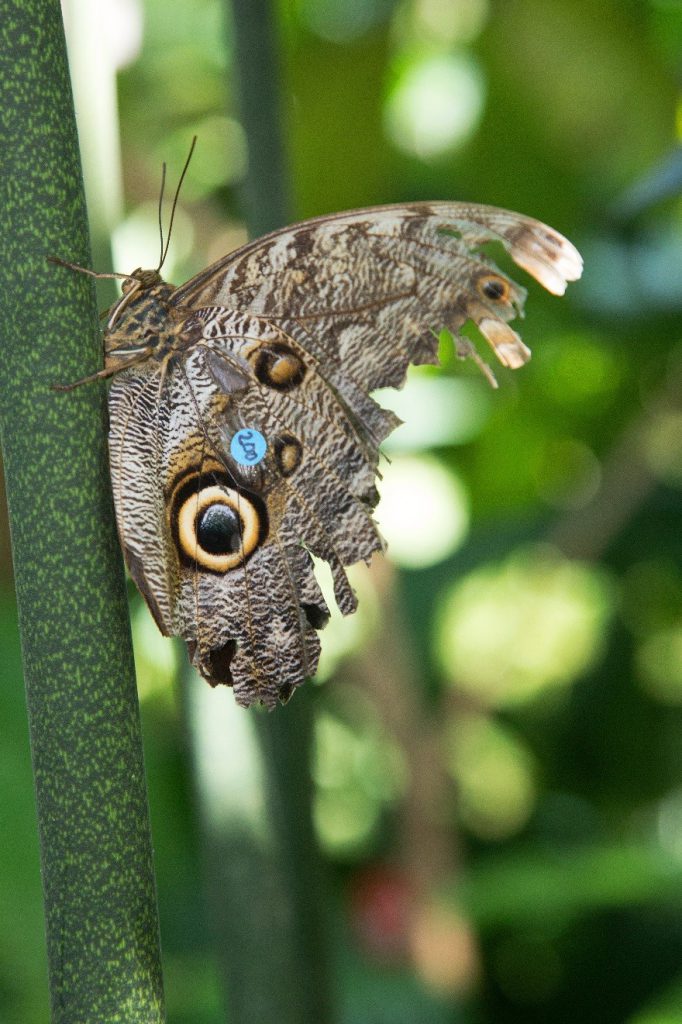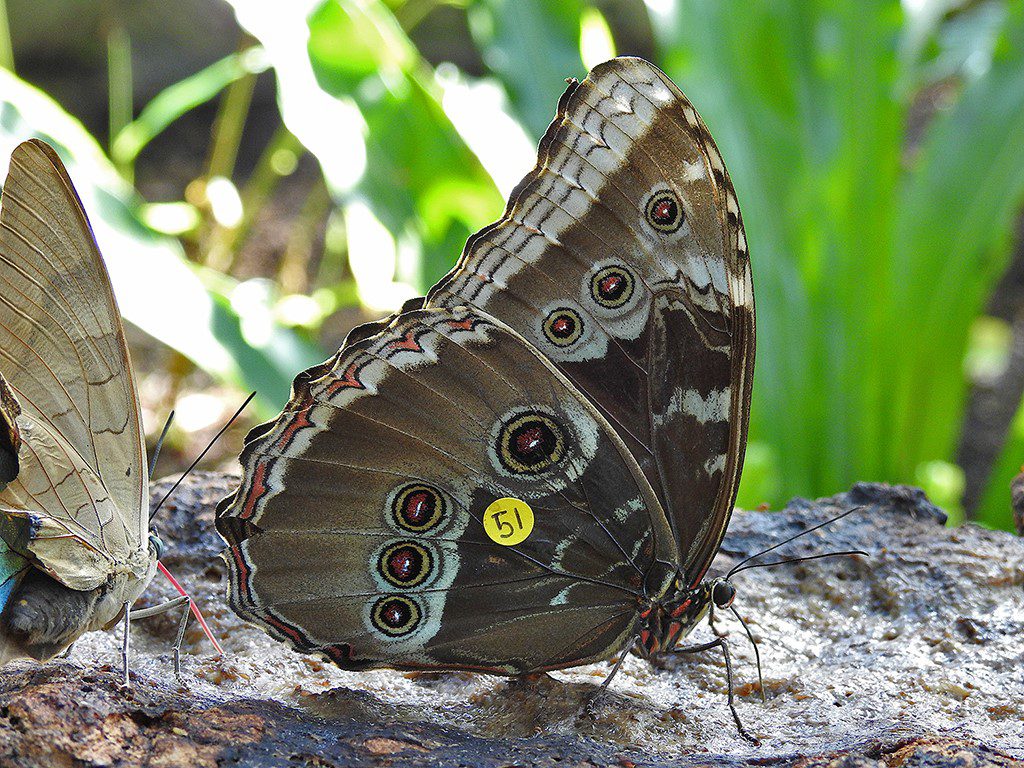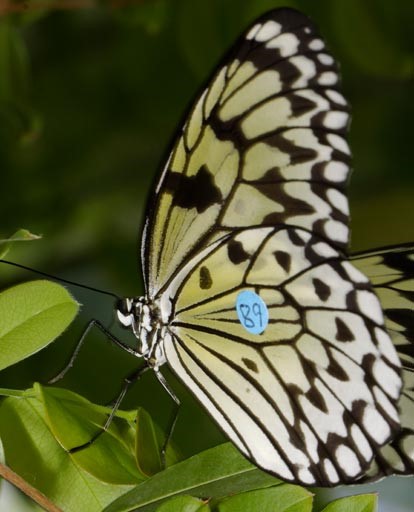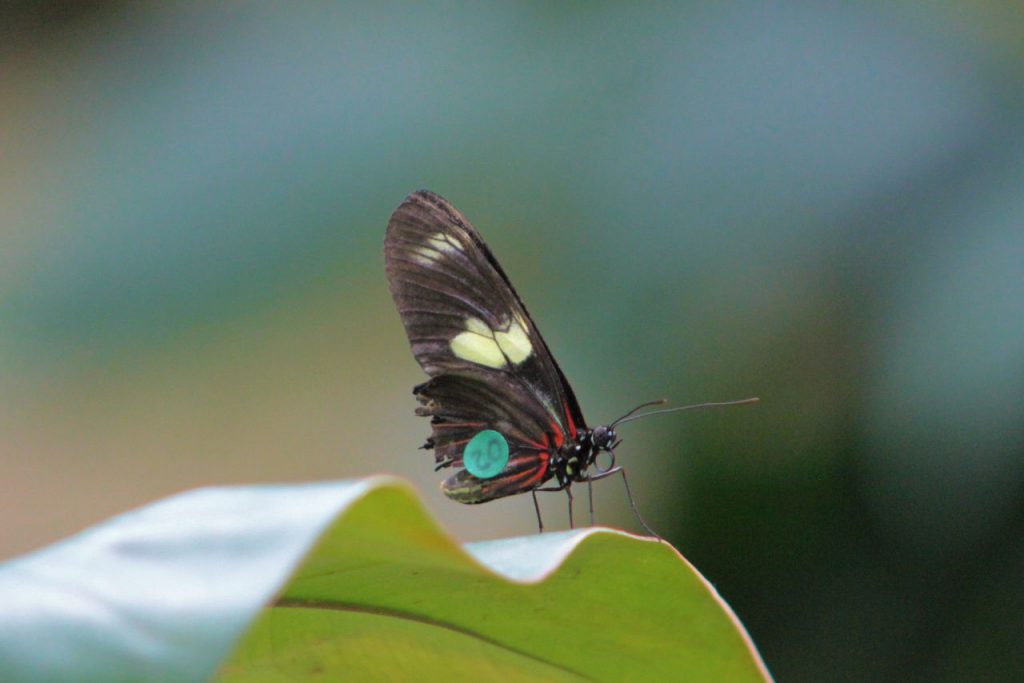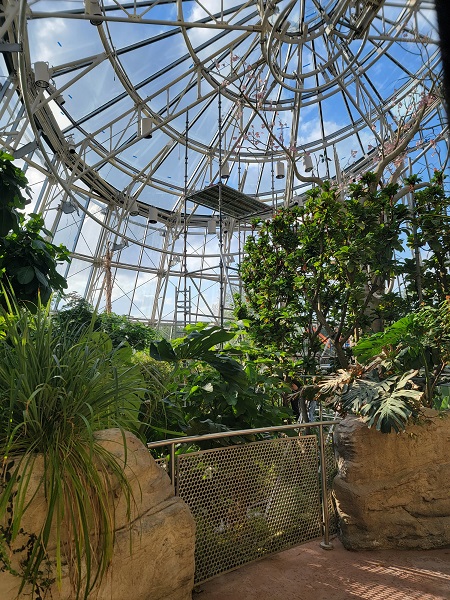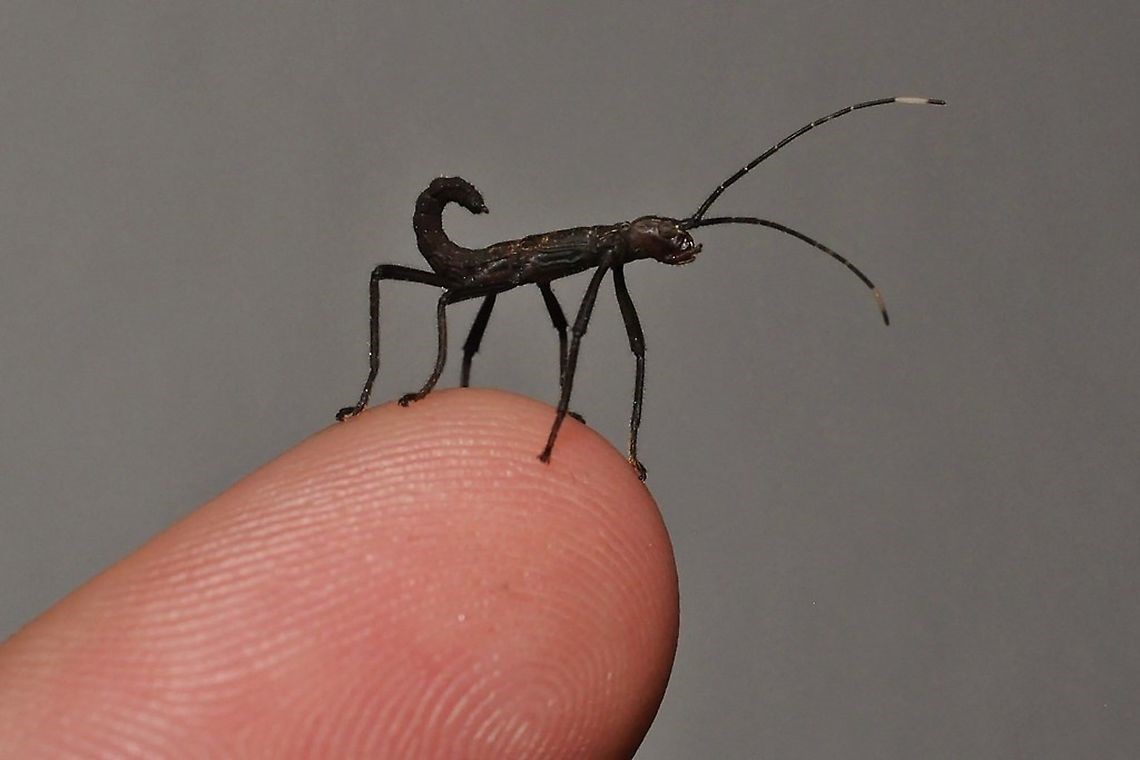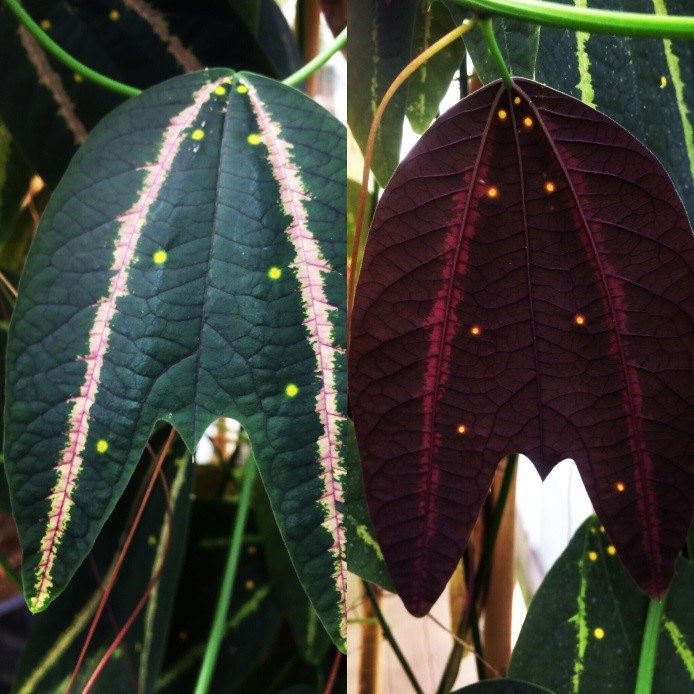How long do butterflies live? It is one of the questions we get most frequently in the Cockrell Butterfly Center, and our replies vary. We may say an average of two weeks, which was the accepted standard based off of a few small scale experiments in the Butterfly Center over the years. We may say up to eight months, depending on the species. We can give acuarate and scientific answers for Monarch butterflies and some of the longwings, but for the majority of the species in the center, we can do little more than guess. In short, many of the species we have in the butterfly center have no scientific data on their adult life span, and we decided it was time to change that.
This Caligo memnon butterfly lived 100 days after emerging from its chrysalis
Photo courtesy of Bob Laventure
In October, we finally had our chance to start a large scale longevity project. This chance came through Chintan, an ecology student at University of Houston. Chintan reached out to us about volunteering at the Butterfly Center, and I showed him the beginnings of a longevity project started over the previous summer. We hadn’t gone far enough to get any data from that project, but it had served as a proof of method for marking butterflies. I had used little labeling stickers to mark each butterfly with a unique number on the day it emerges from its chrysalis, and these labels were easy to see, gave a consistant application method, and did not appear to impede the butterflies’ flight. Chintan and I designed an experiment using two genera of butterflies as our study groups, Caligo and Morpho, or owl butterflies and morpho butterflies. Chintan came to the museum five days a week to record all the experimental butterflies that were still living and which had died, and through all of his work, we began to gather a huge amount of data.
A numbered Morpho peleides butterfly
Photo courtesy of Jane Ashley
During these initial months of the experiment, Chintan noticed that visitors to the museum were really excited about finding the numbered butterflies and wanted to help with the experiment. He had the idea of including visitors in our experiment through citizen science. Visitors can snap a picture of a numbered butterfly and put it on instagram with the hashtag #cbcstudy and the date the photo was taken, or they can email it to khokamp@hmns.org. Starting in January we expanded the experiments to include Heliconius melpomene and Idea leuconoe (rice paper butterflies) and we started requesting these citizen science contributions.
A numbered Idea leuconoe butterfly
Photo courtesy of Donn Mumma
The citizen science was a resounding success, and we have received over 1000 posts on Instagram and around 500 emailed pictures. All of the data is recorded, and it has made a huge difference in our ability to collect data on days we can’t come in or at times we aren’t around. We invite every visitor to come and see how many numbered butterflies they can find! It’s a fun activity, and it has a huge impact on our ability to collect scientific data on the lifespans of butterflies. We are planning on finishing up this project by the end of July 2018, so keep tuned for our next citizen science project!
A numbered Heliconius Melpomene butterfly
Photo courtesy of Tina Krumnow


